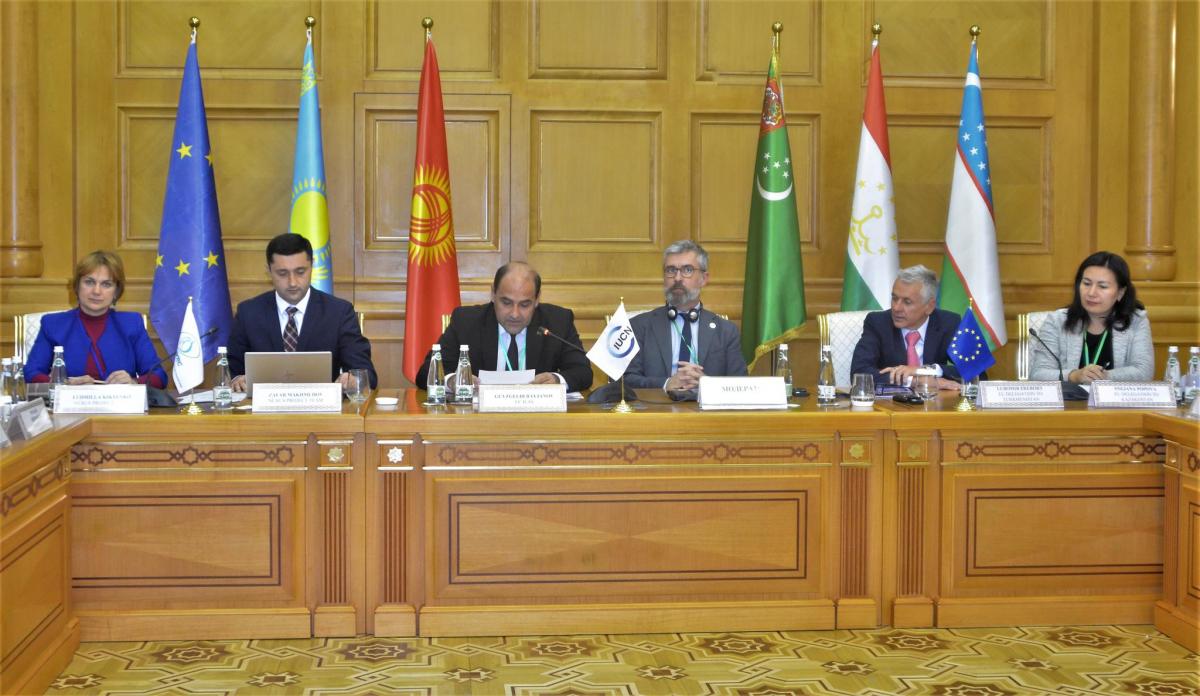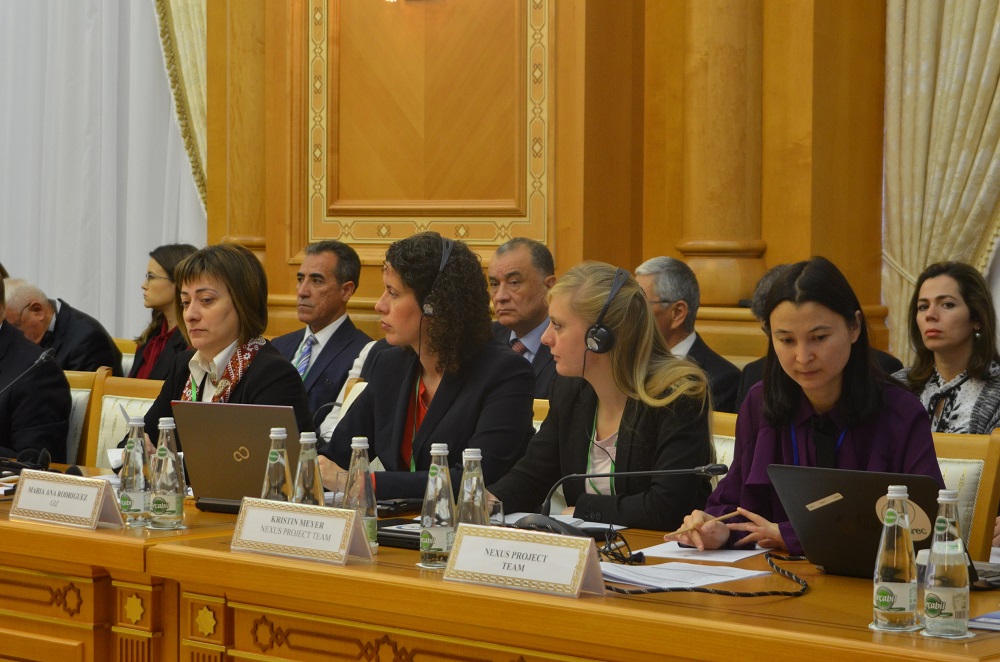Taking stock of three years of Water-Energy-Food Nexus Dialogues in Central Asia
The Central Asian region experiences rapid demographic changes, suffers from water, energy and food insecurities and is highly vulnerable to climate change impacts. Environmental degradation and scarcity, as well as the uneven distribution of natural resources, are triggering tensions in the region. At the same time finance for much-needed infrastructure is becoming increasingly more difficult to secure given the economic demands for growth and development.
In light of increased competition for limited natural resources and complex, dynamic geopolitical developments that hamper multilateral cooperation, it is critical to find alternative approaches to single-sector solutions.
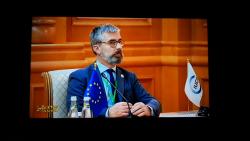 News screenshot, Turkmenistan
Photo: IUCN/Kristin Meyer
News screenshot, Turkmenistan
Photo: IUCN/Kristin Meyer
Better understanding the Water-Energy-Food (WEF) Nexus can help us address shortcomings of single-sector approaches and fosters understanding of linkages between natural resource uses. In this way, the nexus approach serves as a catalyst to explore synergies for mutually beneficial and efficient use of human, financial, technological and other resources and provides opportunities for integration and negotiation of trade-offs.
As Phase 1 (2016-2019) of the EU-funded Central Asia Nexus Dialogue Project: Fostering Water, Energy and Food Security Nexus Dialogue and Multi-Sector Investment comes to an end, key project results were presented to the wider nexus community at the closing conference held on 28 November 2019 in Ashgabat, Turkmenistan. Representatives of regional intergovernmental and basin organizations, relevant national bodies, international financial institutions, academia, experts and the donor community from Central Asian countries, Europe and the USA, discussed the evolution of the political commitment and opportunities for bringing the WEF Nexus to scale in Central Asia. Thematic discussions were paired with an exhibition of video and information materials, publications and an opportunity to play the WEF Nexus game.
We thank the Nexus project team for expert and technical support provided to develop the Aral Sea Basin Programme. We are pleased that the fourth edition of this important regional Programme incorporates intersectoral investment projects that meet the WEF Nexus criteria,” stressed Gyuzgeldy Baydjanov, Chairman of the Executive Committee of the International Fund for Saving the Aral Sea (EC IFAS).
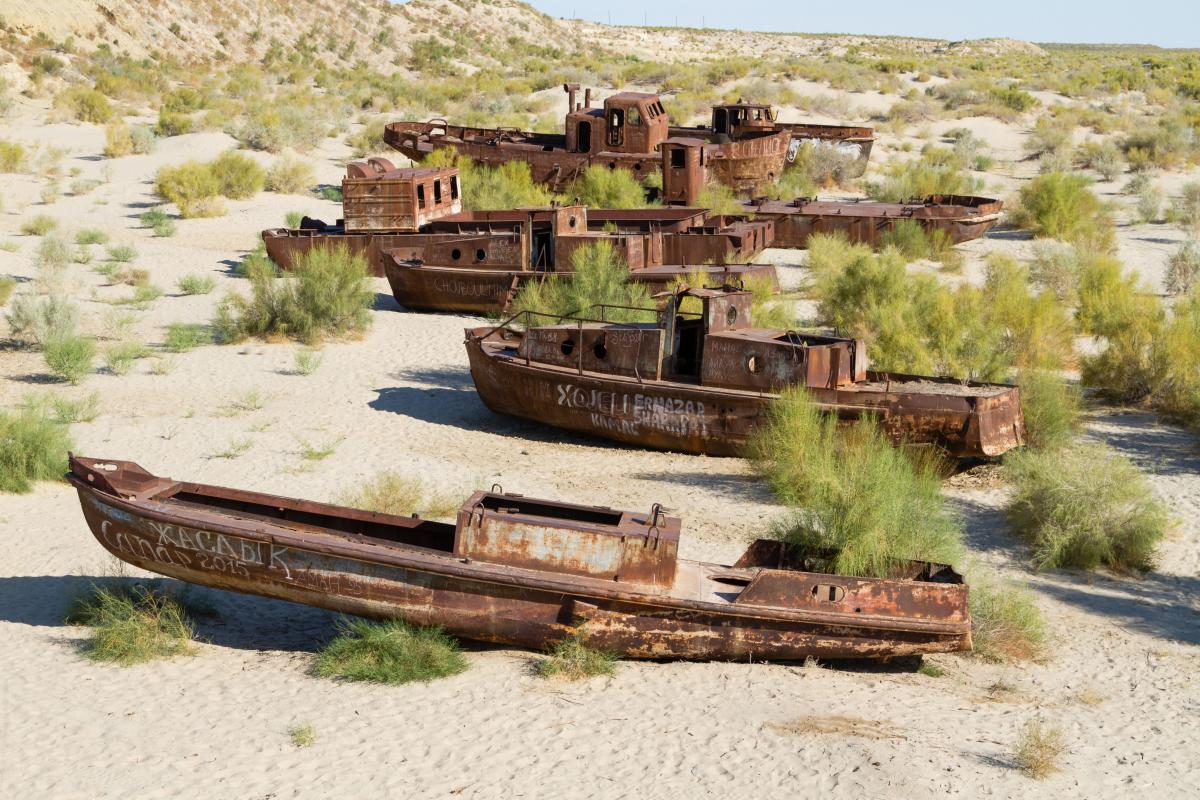 The Aral Sea, Uzbekistan
Photo: Milosz Maslanka/Shutterstock
The Aral Sea, Uzbekistan
Photo: Milosz Maslanka/Shutterstock
Moving from nexus dialogues to actions
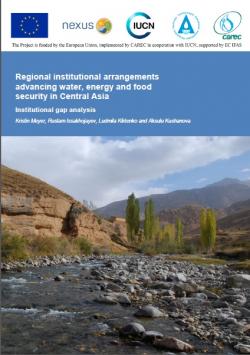 Nexus Institutional analysis_cover
Photo: IUCN
Nexus Institutional analysis_cover
Photo: IUCN
Oftentimes, institutional arrangements that favour sectoral planning and policymaking contribute to resource use conflicts and create contradictions of policy objectives. In Central Asia, national multi-sectoral cooperation is in many instances insufficient in light of the fact that water, energy and food, including agriculture, are inextricably linked beyond national borders. Cooperation with the aim of achieving WEF security at regional level offers new opportunities. However, for these opportunities to emerge, common challenges need to be clearly defined and trust built. This needs to be supported by an enabling institutional environment.
In this context, the institutional analysis recommends a number of immediate steps to ground nexus thinking in Central Asia and to enable institutional change conducive to multi-sectoral planning and decision-making, summarised under five broad headings:
- Understanding the WEF nexus approach;
- Demonstrating WEF nexus application in Central Asia;
- Overcoming water-centric planning and decision-making;
- Enabling political and institutional environment; and
- Developing and planning multi-sectoral investments.
At the same time, appropriate, tailored and targeted institutional capacity building is necessary to facilitate the creation of an enabling environment for effective negotiation of trade-offs, joint decision-making, financing and implementation of strategies, programmes and projects that incorporate nexus perspectives and approaches. Additionally, capacities need to be strengthened at the individual level in order to promote the use of appropriate tools and methodologies to drive informed nexus decision-making, prepare nexus project proposals and implement nexus interventions. Based on a capacity needs assessment, a capacity building plan was developed, detailing institutional, organisational and individual capacity building actions in the short-, medium- and long-term to create an enabling environment and foster the integration of nexus thinking into Central Asian investment planning.
Central Asia Nexus Dialogues going forward
At the closing conference, a Nexus Investment Portfolio, which includes eight project ideas of regional importance and covers a wide range of transboundary natural resources management issues, including water allocation, dam safety, upgrade of technical systems, eco-tourism, combating desertification and other environmental issues of the Aral Sea, was confirmed as relevant by all project countries. The conference further offered a platform to discuss projects proposed by national agencies for piloting WEF Nexus-based planning of activities and investments in the future, namely in two transboundary water facilities (the Farkhad water reservoir and the Tuamuyn hydroelectric complex) and in villages located at the dried-up plains of the Aral Sea.
“The implementation of at least one of the selected projects will prove the benefits of a transition of Central Asian countries from an individual search for solutions to water, energy and food security to a joint multisectoral one. Such a transition will be crucial for the sustainable development of the region,” stressed Serik Bekmaganbetov, representative of Kazakhstan to EC IFAS.
The need to take a step-by-step approach to introduce nexus thinking and application in Central Asia remains. Effective institutional environment and governance structure are particularly important if the WEF Nexus is to be fully rooted in Central Asia. Building on the achievements of the first three years of work, an outlook on the next phase starting 2020 was provided. Gained experience and the recommendations from the assessments undertaken by IUCN provide important inputs into identifying key activities of the Central Asia Nexus Dialogues going forward.
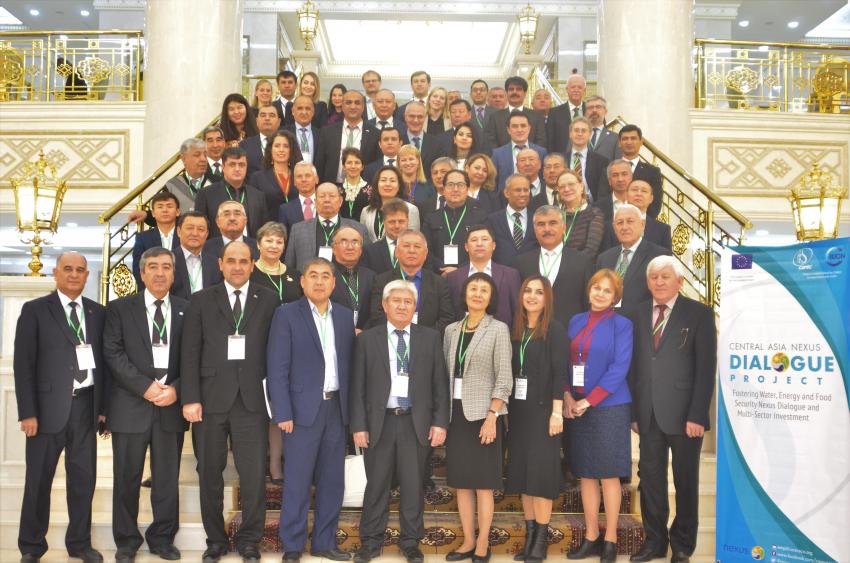 Photo: Aygerim Mukitanova
Photo: Aygerim Mukitanova

